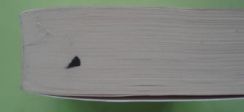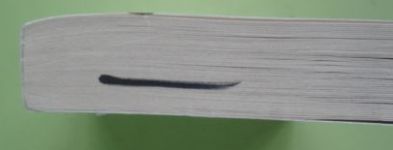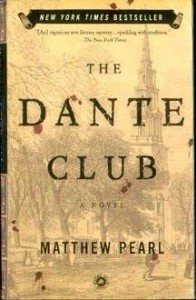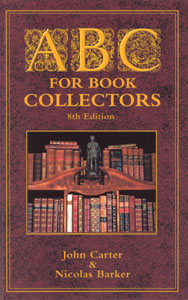You might notice the term “remainder mark” appearing in my item description every now and then. So, what is exactly a remainder mark and why do some books have it?
“After a book has been published and in the retail book stores for a while, unsold copies are returned to the publisher in order to make room for new books. These ‘remainders’ are then sold to wholesalers at deep discounts, where they enter the secondary market of discount book stores. Or they are bought by Internet entrepreneurs like myself who, because our stores are virtual and we have little to no overhead, can make them available to you at a small fraction of the original retail price. The publishers often mark these books with a ‘remainder mark’. This mark prevents someone from buying the book at a discount, and then returning it for a full price refund at a retail store. These marks are usually unobtrusive, and wouldn’t be noticed unless you knew to look for them. They in no way diminish the readability or display value of the book. These marks may cause a book to be valued less by collectors.“
Here are examples of remainder marks:


Technically, these books were never read. Unless of course, it was previously read by someone who bought a remaindered book. Due to transit, these books might be in a condition slightly lower than brand new. In the collector’s market, books with remainder marks are valued less than those without.



